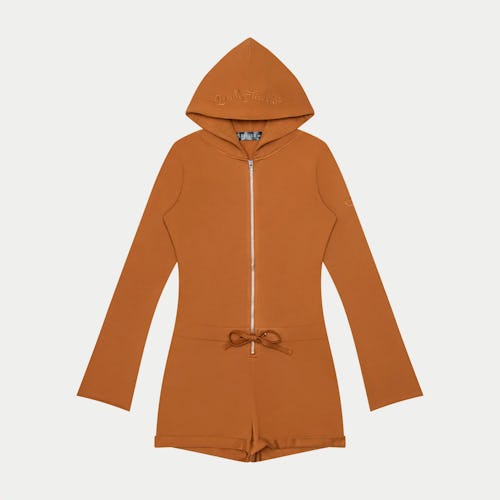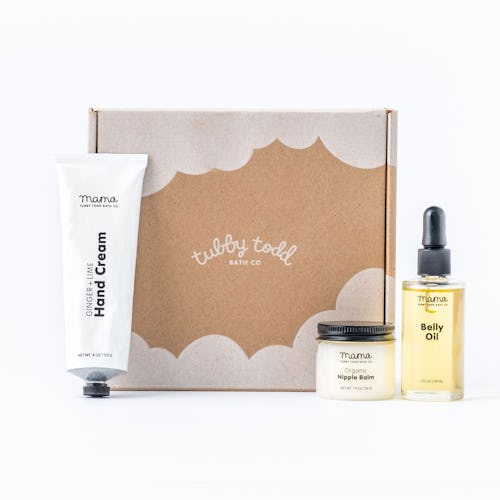
No parent relishes the moment when they’ll have to explain death to their child, but the moment comes nonetheless. Whether the catalyst is the death of a grandparent, another loved one, or even a beloved pet, there will come a time when it falls to us to explain a complex, emotionally fraught, and terrifying topic to a child. Many adults have a hard time wrapping their heads around mortality — breaking the news to your baby can be a doozy.
Thankfully, parents looking for a little help with the conversation will find a bounty of gentle, brilliant, often beautiful picture books on the subject. We turned to children’s librarians from the New York Public Library (NYPL) and Seattle Public Library (SPL) for help compiling this list of the 25 most beautiful, sensitive, and profound books about death for children. Perhaps your child seeks matter-of-fact answers or is more receptive to allusive, allegorical stories — either way, you’ll find the perfect book here.
How to explain death to a child
Books can help tremendously, but they can’t do the job for you. Whatever the circumstance, experts agree that parents and caregivers should try to answer children’s questions about death honestly and directly. “Use simple words appropriate for the child’s age and understanding,” advises Dr. Amanda Lowell, a licensed clinical psychologist at the Yale Child Study Center. “It is important to use the real words such as ‘dead’ and ‘died.’ Euphemisms including ‘lost,’ ‘passed away,’ ‘gone to sleep,’ or even ‘gone to a heaven’ may seem kinder or gentler (for us and for children), but can cause confusion for a child.”
Beyond that, the way the conversation goes will depend a lot on your circumstances and the child’s age. Infants and young toddlers may not understand what is going on, but can sense caregivers strong feelings, Lowell says, and “families should stick to their normal routine as much as possible and provide reassurance and comfort,” in the event of a death of a loved one.
Preschoolers, meanwhile, tend to be curious about death, and may have a lot of questions, Lowell says. However, they “do not understand its permanence or irreversibility,” she warms, so it is particularly important that caregivers use accurate words rather than euphemisms with this age group. For elementary school kids, Lowell suggests families give honest information over time, without overwhelming children. “Because school age children have a fuller understanding of death, may be anxious about others dying, and may ask hard questions,” Lowell encourages caregivers to “give information bit by bit, allowing them time in between to process and make sense of what they’ve heard and ask you any questions.”
Many of the children’s books about death on this list explore and teach about the idea of death at the slow, thoughtful pace that Lowell suggests, gently and tenderly exploring the concept of death and how it touches all our lives.
Children's books about the death of a grandparent
Grandpa’s Stories by Joseph Coelho
Grandpa’s Stories by Joseph Coelho
Amazon

With charming, colorful illustrations, this picture book about death tells the story of a little girls’ love for her grandfather. It’s both heart-warming and heart-breaking in its exploration of what it feels like — and means — to lose someone you love. “A breathtakingly beautiful picture book that allowed my 10 year old and me to have an honest, raw conversation about connections with family members. Wonderful book for loss,” wrote one Amazon reviewer.
Sylvester's Letters by Matthew Burgess
Sylvester's Letters by Matthew Burgess
Barnes & Noble

Recommended by children’s librarian at the NYPL, this new book about the death of a grandparent “centers enthusiasm, adventure, and an ebullient creativity rarely seen in books about loss,” as it tells the story of a young child trying to get a letter to a beloved grandparent who has died.
Grandad’s Island by Benji Davies
Grandad’s Island by Benji Davies
Amazon

“While not explicitly about death, this picture book is about a young boy whose grandfather moves to a distant island,” says Amanda Hua, children’s librarian at SPL. “The boy must then grapple with the idea that he will not see his grandfather anymore. The metaphor for death in this book could be a starting place for families with young children. I recommend this book for preschoolers and up.”
Dadaji's Paintbrush by Rashmi Sirdeshpande
Dadaji's Paintbrush by Rashmi Sirdeshpande
Amazon

A sweet, heart-warming story of the love between a little boy and his grandfather, this relatively new book — it came out in 2022 — was suggested by a children’s librarian at the NYPL. Reviewers rave about it, too, saying the tender book about the death of a grandparent is an “extraordinary work for every shelf.”
The best children’s books for explaining death, grief, and loss.
Always Remember by Cece Meng
Always Remember by Cece Meng
Amazon

This gentle story, suggested by a children’s librarian from the NYPL, tells of the death of an old sea turtle and the way in which the sea creatures who knew him will remember him. It offers comfort and context around the concept of the loss of a loved one for the whole family. One Amazon reviewer describes it as “perfect for processing grief when you are not religious.”
An Ordinary Day by Elana K. Arnold
An Ordinary Day by Elana K. Arnold
Amazon
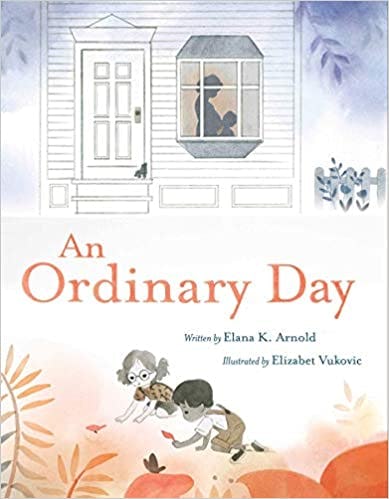
Juxtaposing extraordinary days in the lives of families in a neighborhood — a birth, a death — with ordinary days, this simple picture book weaves the concept of death into the broader context of life as a whole. Gentle and careful, it offers a way to explain death to even the youngest children.
Death Is Stupid by Anastasia Higginbotham
Death Is Stupid by Anastasia Higginbotham
Amazon

Librarians from both the SPL and the NYPL highly recommended this book for children of all ages for its depiction of death and loss. “Part of Anastasia Higgenbotham’s Ordinary Terrible Things series, it is an honest look at unhelpful things people say to kids about death, and the reality of the complicated emotions kids experience when someone dies,” explains Dawn Rutherford, librarian at SPL. Amazon reviewers also rave about it. One reviewer explained their multi-faceted appreciation for the book this way: “This book offers the explanation I have felt too mature to admit: death is stupid...until I ordered this book, I wasn't sure how to make sense of the senseless for the children I love.”
I Miss You: A First Look At Death by Pat Thomas
I Miss You: A First Look At Death by Pat Thomas
Amazon

Part of a series, this is a very straight-forward and direct book created to help parents and caregivers explain death to kids ages 3 to 7. Recommended by children’s librarians at the NYPL, it’s a must-have for families with children who are curious about death or have experienced the death of a loved one.
What Happens When a Loved One Dies? Our First Talk about Death by Jillian Roberts
What Happens When a Loved One Dies? Our First Talk about Death by Jillian Roberts
Amazon

Written by a child psychologist, Dr. Jillian Roberts, this book is structured around questions about death phrased in the voice of a child. It’s direct and clear, and intended to “empower parents/caregivers to start conversations with young ones about difficult or challenging subject matter.” This one offers a straightforward approach if you’re worried a child needs more transparency than an allegory can provide.
I’ll Say Goodbye by by Pam Zollman
I’ll Say Goodbye by by Pam Zollman
Amazon

Focused on a young child who loses a beloved uncle to a terminal illness, this sweet and soothing picture book about death and grief is appropriate for children experiencing the loss of anyone beloved in their life. “It's a very relatable story since many children have family members with serious illnesses, and this book enables them to explore grief and this tough subject,” says one reviewer.
The Important Thing About Margaret Wise Brown by Mac Barnett
The Important Thing About Margaret Wise Brown by Mac Barnett
Amazon

“Even though it isn’t a book about death, Mac Barnett’s picture book biography has become my favorite book to give kids and families grieving a loss, because of how perfectly it captures the capricious nature of grief,” says Jesse O’Dunne, children’s librarian at SPL. “I’d recommend this book to children, teens and adults of all ages. It was in fact immensely helpful to me in processing the death of my father.”
Will My Cat Eat My Eyeballs?: Big Questions from Tiny Mortals About Death by Caitlin Doughty
Will My Cat Eat My Eyeballs?: Big Questions from Tiny Mortals About Death by Caitlin Doughty
Amazon
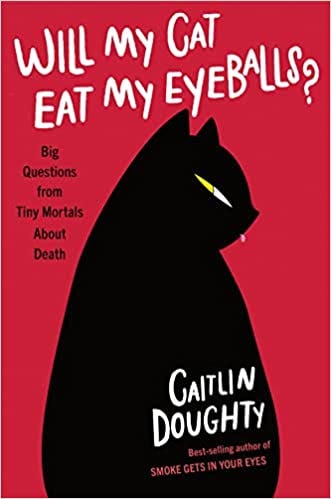
This book is definitely for older grade school and middle school kids, but we love it because it doesn't make a kid feel bad in the slightest for having morbid curiosities. Wonderful for normalizing conversations with your kids about death.
Cry, Heart, But Never Break by Glenn Ringtved
Cry, Heart, But Never Break by Glenn Ringtved
Amazon

It’s hard to say if this powerful, stark book is for children or adults. Translated from the original Danish, the book personifies death, who explains to some young children why it is time for him — gently, naturally — to take their grandmother. It frames death as the thing that gives life meaning. One reviewer explains the powerful role the book played in their family: “Maybe if my kids hadn't experienced such profound loss at such a young age I would have put this book away for later years. But their father is recently passed and that’s pretty freaking heavy and dark so our family needs these conversations to be prompted and held. In this book Death is so kind and loving. He patiently explains the value of life and the value of death without being definitively secular or religious...I’m trying to teach my children that as uncomfortable as grief can be, it’s necessary to help us process loss in a healthy way.”
Duck, Death, And The Tulip by Wolf Erlbruch
Duck, Death, And The Tulip by Wolf Erlbruch
Amazon

Duck and Death strike up a friendship. What follows is a quiet, gentle exploration of death and dying. “If you have a child already curious about death, I would recommend this,” says one reviewer. “It's also non-religious and does not include a concept of ‘god’ and, while raised, leaves the question of an afterlife unanswered.”
Masato’s Garden by Jerry Ruff
Masato’s Garden by Jerry Ruff
Amazon

Suggested by the librarians at the NYPL, this newly-released book about death explores the comfort of nature and taking time outside to reflect in times of loss and grief.
When Dinosaurs Die: A Guide to Understanding Death by Laurene Brown
When Dinosaurs Die: A Guide to Understanding Death by Laurene Brown
Amazon
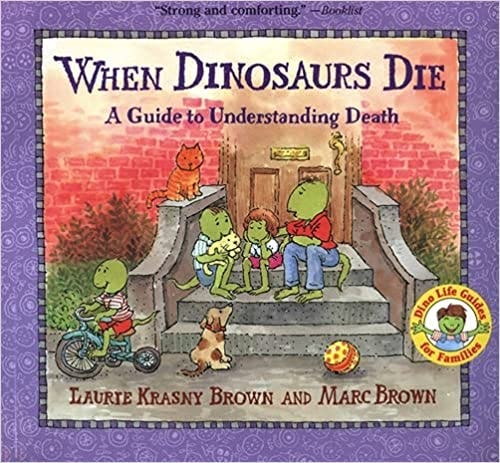
Any child of the ‘80s may remember Laurene Brown’s Dinosaurs series of books, and When Dinosaurs Die has stood the test of time. As one reviewer explains, “as a parent, it helped me make sure I covered all of the important points. I had never thought to point out, for example, that dead people don't eat or see or hear anymore, but while reading the book realized that this might not be something that young kids would intuitively grasp.”
The Funeral by Matt James
The Funeral by Matt James
Amazon

NYPL librarians suggest this book for children who may be attending a funeral for the first time, as it explores the experience two children have at the funeral of their great uncle. The kids start out excited to have a day off school and see their family members gather, but the day changes as they encounter things they’ve never experienced before. One reviewer appreciated that the book “explains some basic aspects of a funeral and a service with a light air and an abundance of joy. I love reading this book to my 7 year old and two 3 year olds.”
The Goodbye Book by Todd Parr
The Goodbye Book by Todd Parr
Amazon

“I appreciate how this book simply and concretely acknowledges the complicated feelings surrounding grief,” says Beatriz Pascual-Wallace, a children’s librarian at SPL. “It can help set up a meaningful conversation with a child about feeling the loss of a loved one.” With colorful illustrations and a simple story, it’s an appropriate book to reach for if you need to explain death to a toddler or preschooler, but will resonate with bigger kids, too.
Children's books about the death of a pet
Big Cat, Little Cat by Elisha Cooper
Big Cat, Little Cat by Elisha Cooper
Amazon

“This gentle picture book introduces young children to the idea of death through the life cycle of pets,” says Amanda Hua, children’s librarian at SPL. “The older, big cat shows the little cat the ropes. One day the big cat is no longer around and the little cat must become the big cat for a new kitten. I would share with toddlers and up.”
I Miss My Pet: A First Look at When a Pet Dies by Pat Thomas
I Miss My Pet: A First Look at When a Pet Dies by Pat Thomas
Amazon
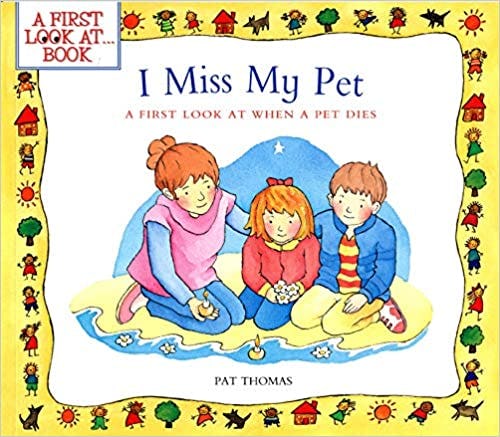
Straightforward and reassuring, this simple, direct non-fiction children’s book about the death of a pet was suggested by children’s librarians at the NYPL to explain death to the youngest children. It’s part of the same series as I Miss You: A First Look At Death.
A Stone for Sascha by Aaron Becker
A Stone for Sascha by Aaron Becker
Amazon
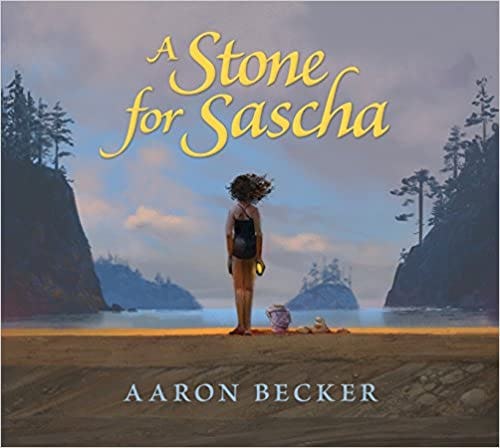
A stand out, wordless picture book for talking to your child about the death of a pet, this suggestion comes from librarians at the NYPL. One reviewer describes it as “an amazingly complex and thought provoking work of art” that both children and adults mourning the loss of a pet will enjoy.
The Tenth Good Thing About Barney by Judith Viorst
The Tenth Good Thing About Barney by Judith Viorst
Amazon

This picture book from 1987 is “classic story of a kid losing a pet, and celebrating the love they shared,” says Dawn Rutherford, a librarian at SPL. It’s is perfect for explaining the death of a pet to kids aged 5 to 8.
Children's books about death of a parent or sibling
Missing Mommy by Rebecca Cobb
Missing Mommy by Rebecca Cobb
Amazon

This simple picture book, suggested by librarians at the NYPL, tackles an incredibly painful subject with gentleness, and may help open a dialogue with a young child who has lost their mother. Though it is written for younger children — preschoolers to age 8 — it will resonate with older kids, too. One reviewer describes it as a “great pathway for kids to start asking questions.”
Everett Anderson’s Goodbye by Lucille Clifton
Everett Anderson’s Goodbye by Lucille Clifton
Amazon

A classic picture book detailing the five stages of grief by poet Lucille Clifton, Everett Anderson’s Goodbye tells the story of a little boy as he tries to process the death of his father. Though it was written in the late ‘80s, the story — which essentially an illustrated poem — is simple and timeless.
Remembering Ethan by Lesléa Newman
Remembering Ethan by Lesléa Newman
Amazon

Remembering Ethan is told from the perspective of Ethan’s sister as she tries to understand her brother’s death and its effect on her family. Recommended by the librarians at the NYPL, the book handles an incredibly difficult subject with care and warmth. One reviewer wrote, “I’m a psychotherapist. This book is not only well-written and beautifully illustrated, but a psychologically sound way to help children and their parents address the difficulties of talking about death in the family. I would use it in my practice.”
While no parent relishes the moment when it is time to help their child think about the concept of death, dying and loss, hopefully it is comforting to know that so many wonderful authors and illustrators have created such beautiful, nuanced and tender books to make it even just a bit easier to explain death to children. May these books offer solace and support in your family’s most challenging moments.
Experts:
Dr. Amanda Lowell, Licensed Clinical Psychologist at the Yale Child Study Center
Children and teen staff at the New York Public Library’s Stavros Niarchos Foundation Library
Dawn Rutherford, librarian at the Seattle Public Library
Amanda Hua, a children’s librarian at the Seattle Public Library
Beatriz Pascual-Wallace, a children’s librarian at the Seattle Public Library
Jesse O’Dunne, a children’s librarian at the Seattle Public Library


























